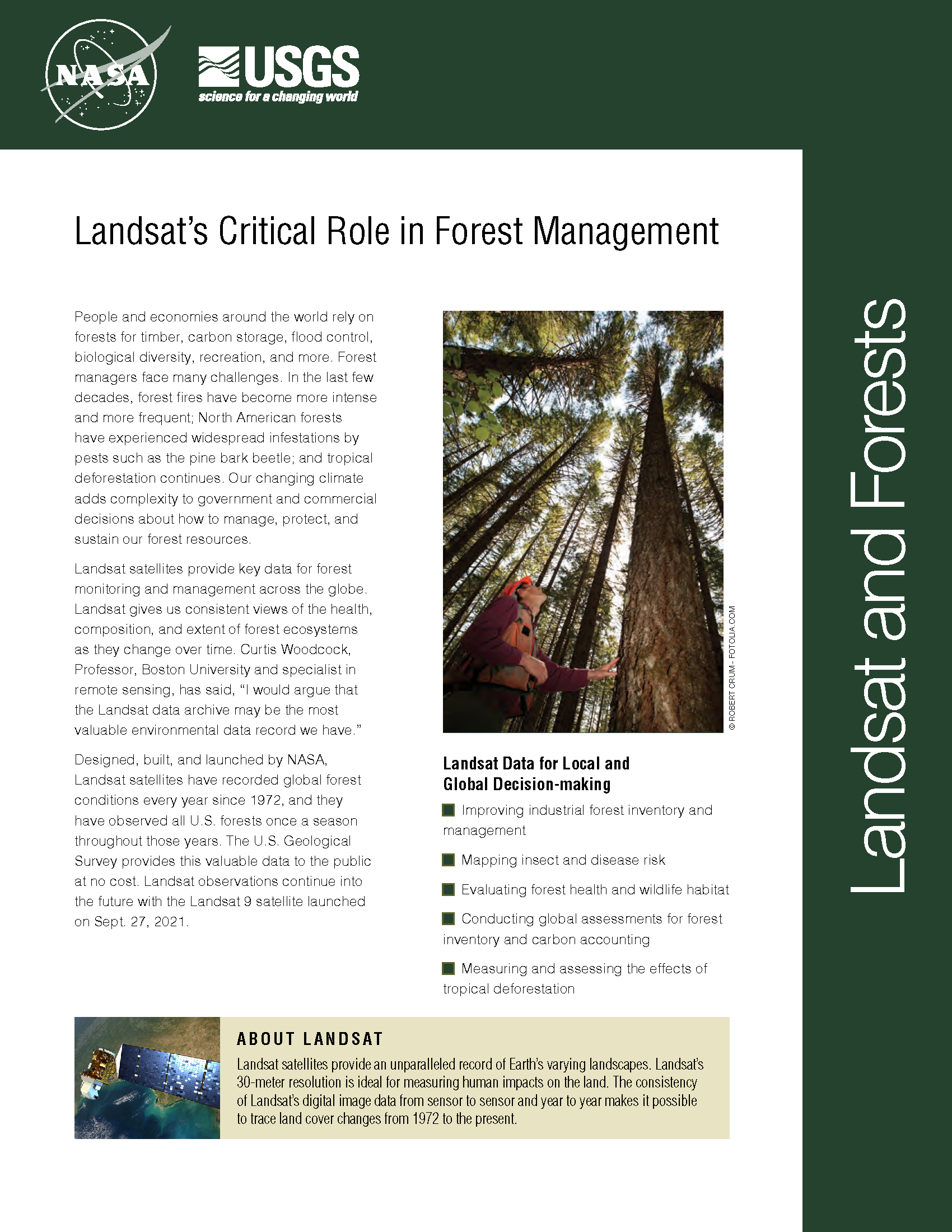Landsat’s Role in Managing Forests
People and economies around the world rely on forests for timber, carbon storage, flood control, biological diversity, recreation, and more. Forest managers face many challenges. In the last few years, forest fires have become more intense and more frequent; North American forests have experienced widespread infestations by pests such as the pine bark beetle; and tropical deforestation continues. Our changing climate adds complexity to government and commercial decisions about how to manage, protect, and sustain our forest resources. Landsat satellites provide key data for forest monitoring and management across the globe. Landsat gives us consistent views of the health, composition, and extent of forest ecosystems as they change over time. Curtis Woodcock, Professor, Boston University and specialist in remote sensing, has said, “I would argue that the Landsat data archive may be the most valuable environmental data record we have.” Designed, built, and launched by NASA, Landsat satellites have recorded global forest conditions every year since the 1970’s, and they have observed all U.S. forests once a season throughout those years. The U.S. Geological Survey provides this valuable data to the public at no cost. Landsat observations will continue into the future with Landsat 8.
1977 Video: Landsat—Satellite for all Seasons
This 1977 NASA video series, “Landsat—Satellite for All Seasons,” provides examples of early Landsat applications.
Landsat Satellite Sees Florida Mangroves Migrate North
Cold-sensitive mangrove forests have expanded dramatically along Florida’s Atlantic Coast since the mid-1980s, as the frequency of killing frosts has declined, according to a new study based on 28 years of satellite data from the NASA-USGS Landsat program.
Forest Monitoring: Bringing the Power to the People
Forest conservation is an issue of major concern to communities large and small around the globe. But gathering the monitoring data needed to make the right decisions has proven extremely prohibitive for individuals to entire governments.
Sensing Forest Disturbance: Landsat Sees Insect Outbreaks From Space
A new way of studying and visualizing Earth science data from a NASA and U.S. Geological Survey satellite program is resulting in, for the first time, the ability to tease
Landsat Sets the Standard for Maps of World's Forests
• NASA’s Earth-observing fleet of satellites provides a worldwide and unbiased view with standardized scientific data—information crucial for tracking the health of the world’s forests. Countries like Brazil are using
Satellite Data Shows that Kirtland's Warblers Prefer Forests After Fire
Kirtland’s warblers are an endangered species of lightweight little birds with bright yellow-bellies that summer in North America and winter in the Bahamas. But be it their winter or their


